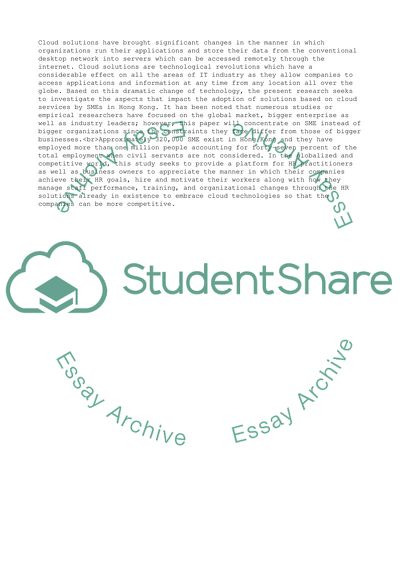Cite this document
(“Analysis of Cloud HR Solutions for SMEs in Hong Kong Dissertation”, n.d.)
Analysis of Cloud HR Solutions for SMEs in Hong Kong Dissertation. Retrieved from https://studentshare.org/business/1700222-analysis-of-cloud-hr-solutions-for-smes-in-hong-kong
Analysis of Cloud HR Solutions for SMEs in Hong Kong Dissertation. Retrieved from https://studentshare.org/business/1700222-analysis-of-cloud-hr-solutions-for-smes-in-hong-kong
(Analysis of Cloud HR Solutions for SMEs in Hong Kong Dissertation)
Analysis of Cloud HR Solutions for SMEs in Hong Kong Dissertation. https://studentshare.org/business/1700222-analysis-of-cloud-hr-solutions-for-smes-in-hong-kong.
Analysis of Cloud HR Solutions for SMEs in Hong Kong Dissertation. https://studentshare.org/business/1700222-analysis-of-cloud-hr-solutions-for-smes-in-hong-kong.
“Analysis of Cloud HR Solutions for SMEs in Hong Kong Dissertation”, n.d. https://studentshare.org/business/1700222-analysis-of-cloud-hr-solutions-for-smes-in-hong-kong.


